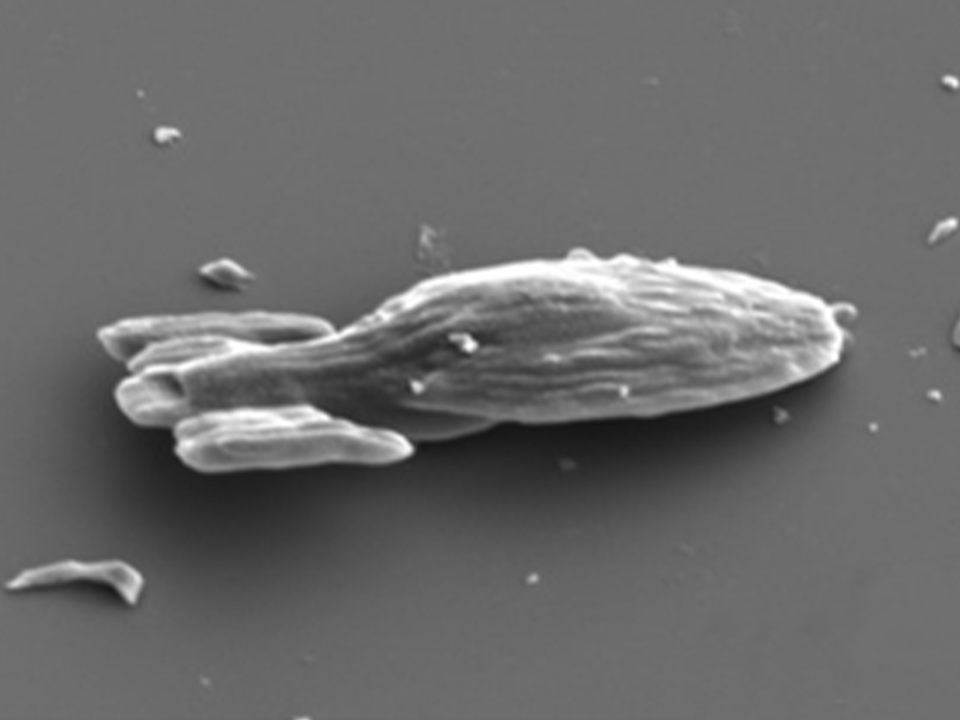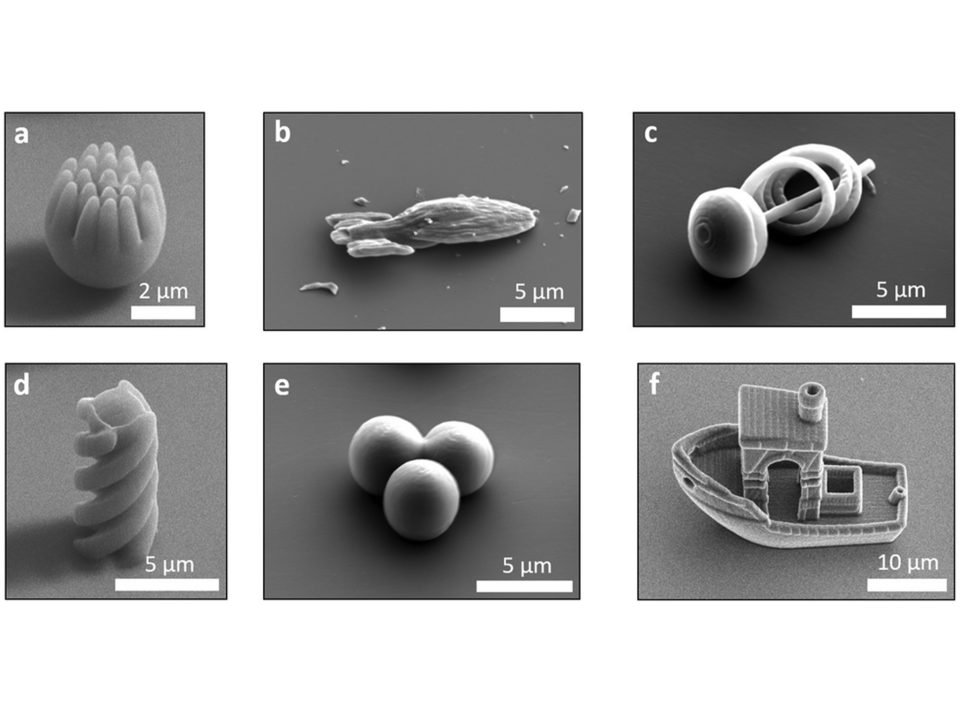Scientists 3D print microscopic Star Trek spaceship that can move by itself

Physicists have 3D-printed a microscopic version of the USS Voyager from Star Trek.
The tiny Intrepid-class spaceship is only five micrometers long, the equivalent to 0.005 millimetres.
It was made by researchers at Leiden University who have been printing a range of microswimmers, which are very small objects which can move through liquids.
The way that these microswimmers pass through liquid is via chemical reactions. The platinum coating on each of the objects react to a hydrogen peroxide solution and the resulting force propels them through the substance.
Some swimmers can be propelled by an external magnetic field, however this is not practical in many applications which require the particles to be autonomous themselves.
Usually, studies like those conducted by the researchers use spherical objects, but by experimenting with stranger designs different ways to move through liquid can be found.
“One such study showed that L-shaped particles exhibit circular trajectories”, the researchers state in a paper. They also “found unexpected motion patterns such as non-cylindrical helices”.
The model USS Voyager is not the only small object the researchers have printed. Along with helixes and lollipop-designs, 3D Benchy, a 30 micrometer-long boat (about a third of the thickness of a human hair) that is a standard test object for 3D printers, was also made.

“3D Benchy is a structure that has been designed to test macroscopic 3D printers because it has several challenging features, and it was natural to also try it at the micrometer scale” researcher Daniela Kraft told Gizmodo.
"In addition, making a swimming micrometer-sized boat is fun."
As a result of the research, scientists may be able to better understand biological microswimmers. These include sperm, bacteria, and white blood cells.
“Answering how symmetry and shape couple to motility and motion patterns, is of significant value in understanding synthetic and biological active systems alike, individually and collectively”, the scientists say.
“Ultimately, it will allow a greater control and design of the behaviour of synthetic microswimmers, useful for applications in therapeutic diagnostics and drug delivery.”
3D printing has been used in other applications, including NHS prosthetics , sculptures, and architecture.
In 2017, scientists also developed ink containing bacteria that could be used to create “living materials” that could help organ transplants and even tackle pollution by adjusting the same liquids used by 3D printers.
Read more
3D printing is the future of art heritage – here's why

 Yahoo Finance
Yahoo Finance 